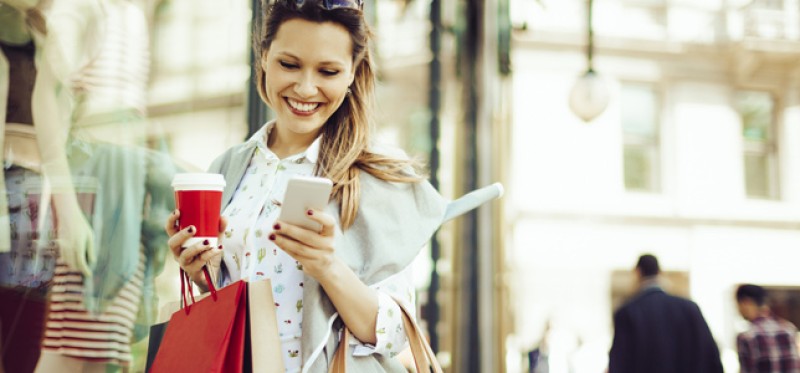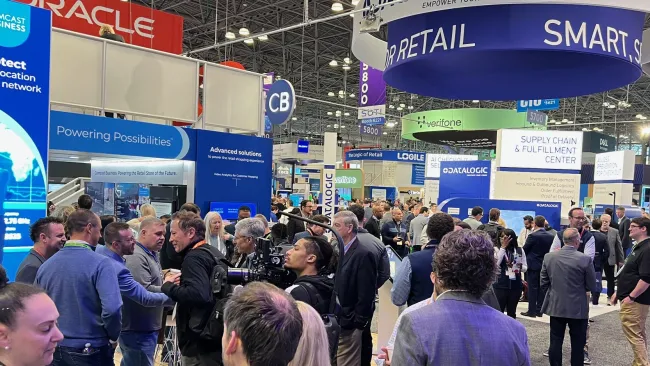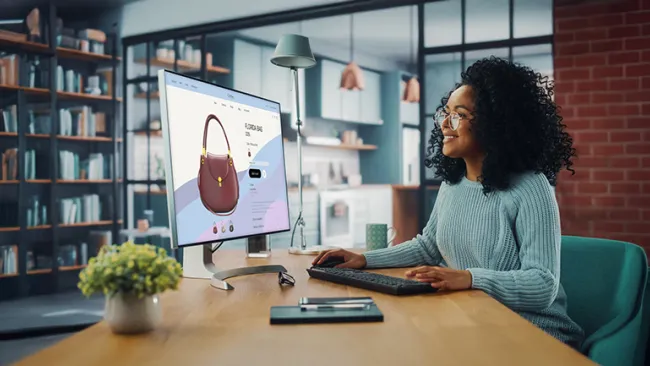The holiday retail season is the most important revenue generator for retailers, so it’s important to provide unique and tailored customer experiences that also meet their needs, both online and in the stores.
Here’s a look at some of the strategies retailers can use to better engage this year’s holiday shoppers.
1. Don’t Bet on Door-Buster Sales
The increasingly long holiday season has dampened the sense of urgency among shoppers. Consumers are less impressed by Black Friday when sales start popping up the day after Labor Day or even earlier. Furthermore, Amazon is there if they don’t feel like lining up at dawn for a sale.
Instead of bemoaning the loss of Black Friday, companies should adjust their tactics to fit customer behavior. Try scheduling offers in terms of browse versus purchase days. Highlight offers like free or two-day shipping on weekdays to catch the attention of consumers who are quickly browsing sites but may not be ready to buy. Save your discount offers for the later part of the week or the weekend when people are likely to spend more time shopping in stores or online.
2. Strive for Frictionless Shopping
Expect companies to roll out more ways to reduce friction in the shopping journey. There are already signs of this happening. The Amazon Dash button, for instance, allows shoppers to re-order items with literally just a push of a button.
As companies work on simplifying the shopping experience, it’s important to take user behavior into consideration. For example, it’s easy to miss promotional offers and codes if they only appear on the homepage. Reminding shoppers of the promotional offer throughout the shopping experience may determine whether they make a purchase. Highlighting offer codes at the top of a page also reduces the burden on the shopper to hunt for and use them.
3. Explore Multisensory Experiences
In an increasingly screen-based world, stimulating consumers’ senses beyond vision can help brick-and-mortar stores stand out. Unsurprisingly, vision and touch are important senses in the store experience, but smell and sound matter, too.
Research by Nobel Peace Prize winners Richard Axel and Linda Buck shows that our sense of smell is our "most emotional" sense. Savvy retailers take advantage of the notion that scents evoke certain emotions with ambient scents like vanilla and rose maroc, which have been linked with increased sales in a retail environment.
Music has also been found to affect our emotions. It’s not a coincidence that restaurants that want customers to linger play music with a slow tempo while clothing retailers who want to help shoppers traverse the entire store may use a more upbeat playlist. When creating the in-store experience, retailers should ask themselves what emotions do they want to evoke and do their current tactics appeal to their target audience.
4. Fine Tune your Mobile Experience
Forrester Research predicts that mobile phones will generate 15 percent of ecommerce sales by 2020 and tablets will generate 33 percent of ecommerce sales in the same time frame. Ovum reports similar findings and expects mobile-enabled sales to reach $2.05 billion by 2020, up from $1.44 billion in 2015.
It’s not a secret that mobile phones and tablets are now ingrained in many people’s daily lives. A consumer’s first interaction with a brand often takes place on a mobile device. Furthermore, the majority of search is now mobile. According to the National Retail Federation, 56 percent of searches that resulted in a click to a retail site during last year’s holiday season were conducted on either a smartphone or tablet.
But offering a mobile-responsive site isn’t enough. Companies must Fine-tune their customer experience with features that are tailored to a mobile-first consumer such as real-time in-store promotions or in-store mobile checkout. And if they haven’t already begun thinking of how to meet the needs of a mobile audience, their competitors probably are.
5. Consider Mobile Payment Options
The rise of mobile devices and efforts to increase data security are leading retailers to update their payment terminals to newer models and offer additional payment options. And merchants have a slew of payment solutions to choose from.
PayPal recently rolled out the PayPal Here Chip Card reader, which is compatible with iOS and Android devices. It accepts both EMV and magnetic stripe cards, as well as NFC payments like Apple Pay, Android Pay, and Samsung Pay.
Similarly, Mastercard recently introduced the ability to use its digital payments service, Masterpass, in stores that accept contactless payments as well as in online stores. There’s also Poynt, a “smart” terminal that supports several payment technologies including magnetic cards, NFC, EMV, and QR codes. It remains to be seen which vendor will dominate the mobile payment space but retailers should implement at least one mobile payments solution as more consumers come to expect the option to pay on a mobile device.
6. Don’t Stop at the Millennial Shopper
Millennials are now the largest demographic group in the U.S. and are more racially diverse than previous generations. To successfully engage Millennial consumers, it’s important for companies to understand their expectations while keeping in mind that other customers may share similar sentiments.
The characteristics often associated with Millennials, that they're impatient, tech savvy, and wary of advertising, apply to other demographic groups as well. Instead of treating Millennial shoppers as a unique set of customers, brands should challenge themselves to deliver products and services that would suit anyone.
Assuming, for instance, that younger consumers only want to engage with businesses over email or text is a misconception. When it comes to complicated issues, a Millennial would also expect the company to have associates who can quickly answer their questions. Companies must track the rate of customer interactions across various channels and adjust resources accordingly.
7. Keep an Eye on Social Commerce
Social media plays an increasingly large role in the shopping journey and it will continue to do so in 2017. Social media is quickly moving from just providing word-of-mouth recommendations to a marketplace of “shoppable images” and even a direct-to-consumer service channel.
For example, Fossil offers images of its handbags and watches on Instagram that users can purchase with a tap or click. The images contain links that bring users back to the Fossil website where they can purchase the item online.
Other brands like 1-800 Flowers are letting customers place an order directly from Facebook. 1-800 Flowers is one of the first brands to use Facebook Messenger bots, which use artificial intelligence and natural language processing to provide basic services such as processing online orders. Users can browse through and select a flower arrangement on Facebook Messenger and the bot will process the payment and delivery information, just like a sales assistant. While social commerce capabilities are still rudimentary, consumers are spending more and more time on social platforms and brands would be wise to keep an eye on this space.
From multisensory experiences to chat bots, retailers have many strategies and tools to choose from. And while there’s a lot of value in trying out new tactics, some approaches may not fit their brands. Making incremental changes to their customer strategies is a smarter approach. Therefore, taking a measured approach to new tactics while shaping them around customer behavior will help deliver experiences with the right amount of sparkle.
To learn more about this topic, read our eBook "2016 Holiday Retail Readiness Plan."
Also, check out the most recent issue of our monthly customer experience eNewsletter, Dialogue.
Seven Ways to Lock in Customers this Holiday Season

















